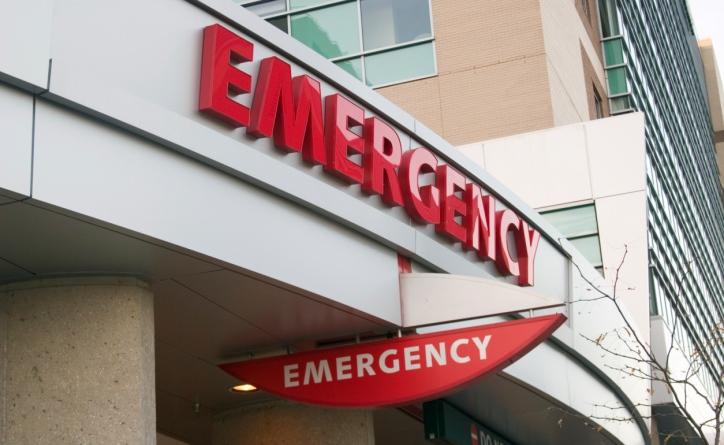Editor's note: This story was revised Dec 6, 2013, to include information about the cost of developing the preparedness index.
Public health preparedness in the United States boasts "substantial" strengths that reflect important gains made over the past decade, but there's also room to improve, according to a painstaking review prepared by a consortium of about 25 governmental and non-governmental health agencies and organizations.
After a 2-year effort to gather and analyze existing state-level data from a wide range of sources, the consortium awarded the nation an overall health security preparedness score of 7.2 on a scale of 10, with state scores ranging from 5.9 to 8.1. The scores reflect a total of 128 variables or measures.
The National Health Security Preparedness Index (NHSPI), as it's called, was released yesterday by the Association of State and Territorial Health Officials (ASTHO), which led in developing it, along with the Centers for Disease Control and Prevention (CDC).
The index is billed as the most comprehensive measure of health preparedness to date, and the only one that attempts to provide a single composite measure for the country.
"We've had a lot of measures around various aspects of health security preparedness, but this is the first time they've been put together into a comprehensive set of measures," Catherine C. Slemp, MD, MPH, who chaired the NHSPI's Stakeholder Communication Workgroup, told CIDRAP News. She is a former state health officer for West Virginia and now a public health consultant.
"This first-of-its-kind Index allows us to gauge how prepared we are as a nation, and as individual states, to prevent, protect against, mitigate, respond to, and recover from public health threats,” said Ali S. Khan, MD, MPH, director of the CDC's Office of Public Health Preparedness and Response, in a press release.
Preparation of the index involved a steering committee and three workgroups including a total of more than 75 experts from public health, emergency management, private industry, nonprofits, government, and academia. John R. Lumpkin, MD, MPH, of the Robert Wood Johnson Foundation chaired the steering committee.
NHSPI officials said the index can be used to guide quality improvement, inform policy and resource decisions, and encourage shared, community-wide responsibility for preparedness.
Strengths cited in three areas
The index authors found strengths in three of the five "domains" or general categories of preparedness: health surveillance, incident and information management, and countermeasure management. Areas that were judged to need more work are surge management and community planning and engagement.
The national score for health surveillance, defined as detecting and investigating health threats, is 7.3, with state scores ranging from 5.8 to 8.8. (The national score is the average of all state scores.) The surveillance domain includes three sub-domains. The national scores and state ranges for these are:
- Health security surveillance and epidemiologic investigation, 7.7; 4.6 to 9.4
- Environmental and biological monitoring, 6.7; 4.1 to 9.8
- Laboratory testing, 7.6; 5.4 to 9.3
Each sub-domain includes a number of specific variables. For example, the health security surveillance and epidemiologic investigation sub-domain includes nine measures, such as number of epidemiologists per 100,000 population, participation in the National Electronic Disease Surveillance System, and the ability to exchange electronic information with healthcare providers.
The index defines the domain of incident and information management as the ability to mobilize resources and coordinate emergency response across a community. The national score for that domain is 7.8, with a state range of 5.1 to 9.3. The related sub-domains with their national scores and ranges are:
- Incident management and multi-agency coordination, 8.0; range, 5.1 to 9.3
- Emergency public information and warning, 7.5; 3.8 to 9.7
The highest scoring-domain, at 9.0, was countermeasure management, defined as the ability to manage and use medications and other materials to prevent or treat health problems resulting from various high-risk exposures. The related sub-domains and their scores are:
- Medical materiel management, distribution, and dispensing, 9.3; 7.6 to 9.9
- Countermeasure utilization and effectiveness, 8.7; 7.7 to 9.7
Slemp said the good rating for countermeasure management "reflects state and local public health planning and exercising with partners and high utilization of selective vaccines." She noted that the index used influenza and pneumococcal vaccination coverage in children under age 5 as a proxy for effective vaccine delivery and community uptake.
Categories needing improvement
The national rating for surge management is 5.8, with a range of 4.3 to 7.6. The sub-domains and their ratings are:
- Emergency medical services, 6.6; 3.4 to 9.1
- Acute and primary care, 5.9; 3.7 to 8.1
- Mental and behavioral healthcare, 4.9; 2.3 to 8.9
In surge management, said Slemp, "You see the effect of existing healthcare system challenges that are further magnified in times of disaster, like healthcare workforce distribution, emergency department wait times, and availability of specialized services, such as trauma centers and burn beds."
The other domain found in need of improvement was community planning and engagement, which received an overall score of 6.1, with a state range of 4.1 to 8.3. The sub-domains and their scores are:
- Cross-sector and community collaboration, 5.9; 2.0 to 10.0
- At-risk populations, 6.3; 2.1 to 9.5
- Management of volunteers during emergencies, 3.7; 1.1 to 9.9
- Social capital and cohesion, 8.5; 7.3 to 9.6
Range of states' scores
Although some of the index categories reveal a wide range of variables among the states, NHSPI officials point out that the states don't vary greatly in their overall scores (which range from 5.9 to 8.1).
"All states have strengths and gaps, but if you look at the range of states overall, it's fairly narrow—plus or minus one of the national overall result," said Slemp. "I think what that tells us is that all states have taken these responsibilities seriously."
The index's creators intentionally steered clear of producing a simple preparedness ranking of the states, though it's possible to find each state's overall and category scores and compare them with the national averages. For example, Minnesota received an 8.0 for cross-sector and community collaboration (national average, 5.9), which is part of community planning and engagement.
"We had a lot of discussion on how to give a range of scores, so that you can't rank all 50 states 1 through 50," said Maureen Sullivan, MPH, a member of the Stakeholder Communication Workgroup for the NHSPI. "I think we landed in a good spot." She supervises the emergency preparedness and response group in the laboratory at the Minnesota Department of Health.
Sullivan noted that the CDC and other groups, such as the Trust for America's Health and the Association of Public Health Laboratories, have conducted evaluations of particular aspects of public health preparedness in recent years, but the NHSPI is the first major effort at an overarching assessment. She said the CDC and ASTHO took the initiative to build the index.
Many stakeholders enlisted
One of the key aims for the project was to include a wide range of stakeholders, said Slemp. "There was a guiding principle that stakeholder engagement was critical. The index was built by the community for the community," she said. "It was structured and designed to include practice experts, policy experts, academic experts, from a wide array of associations and sectors."
Sullivan commented that the CDC and ASTHO "did a very good job of getting many stakeholders in the room to discuss what we'd do and how."
Another guiding principle, in fact, was to use available information, and thus avoid loading more data-gathering demands on people in the field.
It turned out that lots of information was available. "We were able to determine that many of the things we wanted to measure were already available in one fashion or another," said Sullivan "I was surprised at how many individual measurements existed that we could draw from. There was a vast amount of information out there that had never really been pulled together."
Slemp described a painstaking, five-step process of identifying possible measures, screening and defining them, and validating them. "We started out with probably 3,000 measures, and over time we whittled them down to 128," she said.
In addition to the Stakeholder Communication group and steering committee, the project involved a Governance Workgroup, chaired by Tom Inglesby, MD, of the UPMC Center for Health Security, and a Model Design Workgroup, chaired by Jonathan Links, PhD, of Johns Hopkins University.
NHSPI officials say this first edition of the index focuses primarily, but not exclusively, on public health and healthcare, but the hope is to include other sectors and factors in future versions.
"It looks at health preparedness from a broader lens," said Slemp. "It's not simply about public health or the hospital; it's about how the entire community influences preparedness."
The CDC funded preparation of the index under a cooperative agreement with ASTHO, said CDC spokesman Jason McDonald. He said the total approximate funding was $2.1 million over 2 years of index development from 2011 to 2013. The money supported meeting travel for non-federal workgroup members, workgroup meeting support, Web site development and support, measure selection and creation of the index model, communications support, and stakeholder engagement.
The index will be managed and maintained by the Robert Wood Johnson Foundation, according to Sullivan.
See also:
Dec 4 NHSPI press release
NHSPI frequently asked questions
Sep 26, 2012, CIDRAP News story "States again score well in CDC preparedness report"



















